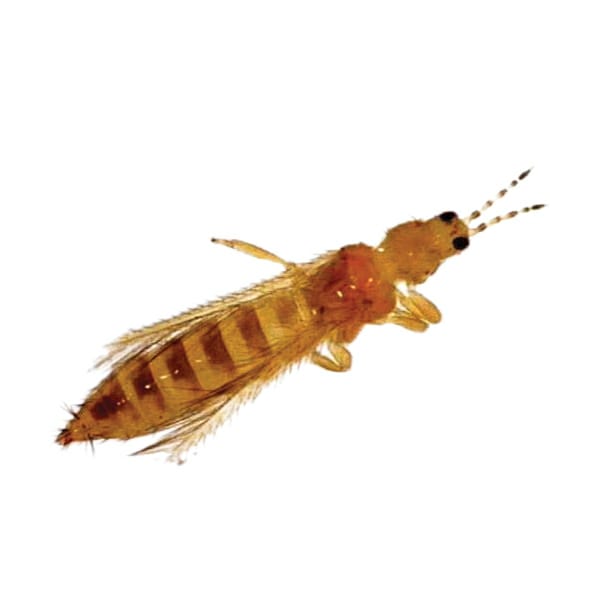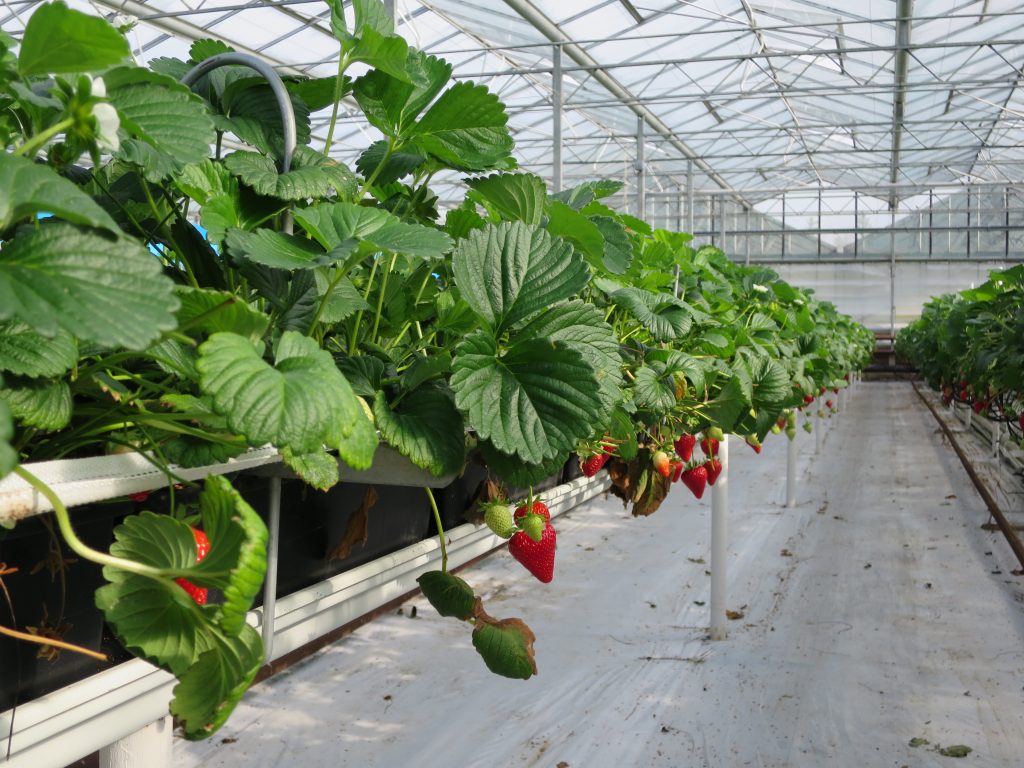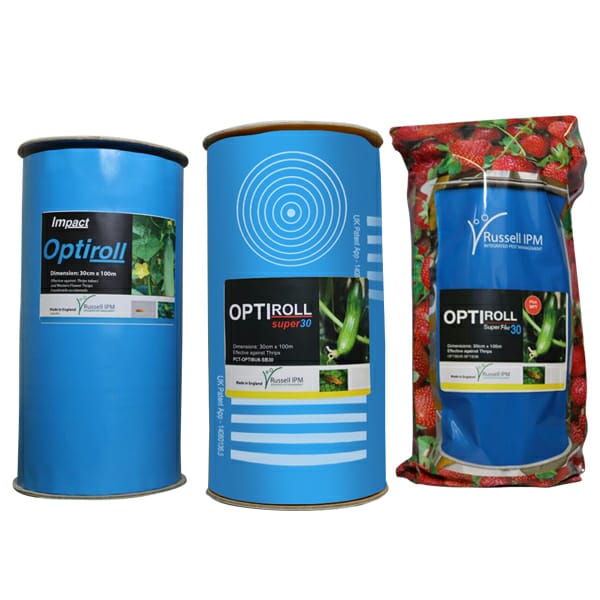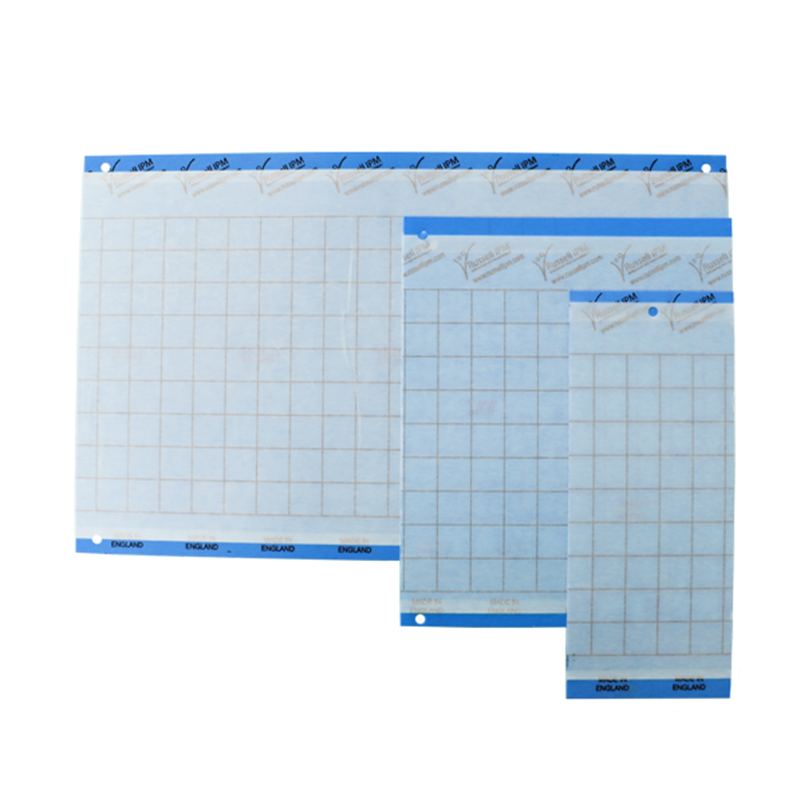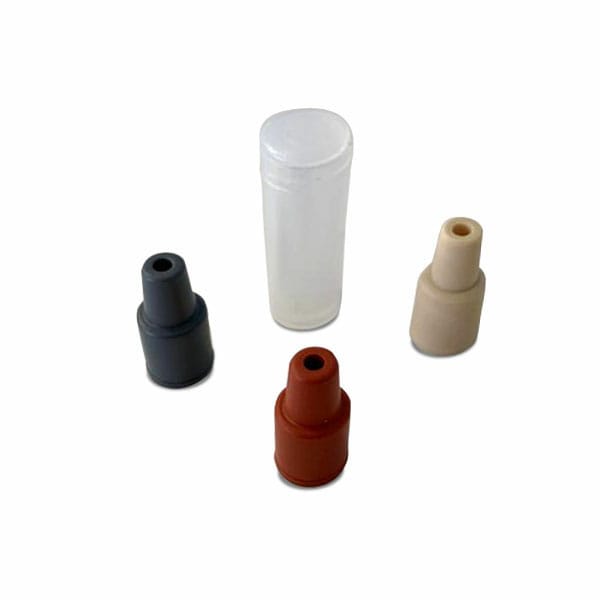Overview
Throughout the years Russell IPM along with various academic partners have carried extensive research into the mass trapping of Western Flow Thrips (Frankliniella Occidentalis).
The western flower thrips Frankliniella occidentalis (Pergande) (Thysanoptera: Thripidae) is a cosmopolitan, polyphagous insect pest that causes bronzing to fruit of strawberry (Fragaria x ananassa). The main aim of this study was to test whether mass trapping could reduce damage and to predict whether this approach would be economically viable. In semi-protected strawberry crops, mass trapping of F. occidentalis using blue sticky roller traps reduced adult thrips numbers per flower by 61% and fruit bronzing by 55%. The addition of the F. occidentalis aggregation pheromone, neryl (S)-2-methylbutanoate, to the traps doubled the trap catch, reduced adult thrips numbers per flower by 73% and fruit bronzing by 68%. The factors affecting trapping efficiency through the season are discussed. Damage that would result in downgrading of fruit to a cheaper price occurred when bronzing affected about 10% of the red fruit surface. Cost-benefit analysis using this threshold showed that mass trapping of thrips using blue sticky roller traps can be cost-effective in high-value crops. The addition of blue sticky roller traps to an integrated pest management programme maintained thrips numbers below the damage threshold and increased grower returns by a conservative estimate of £2.2k per hectare. Further work is required to develop the F. occidentalis aggregation pheromone for mass trapping and to determine the best timing for trap deployment. Mass trapping of thrips is likely to be cost-effective in other countries and other high-value crops affected by F. occidentalis damage, such as cucumber and cut flowers.
Citation: Sampson C, Kirk WDJ (2013) Can Mass Trapping Reduce Thrips Damage and Is It Economically Viable? Management of the Western Flower Thrips in Strawberry. PLoS ONE 8(11): e80787. doi:10.1371/journal.pone.0080787
Editor: Cesar Rodriguez-Saona, Rutgers University, United States of America Received June 19, 2013; Accepted October 3, 2013; Published November 25, 2013
Copyright: ß 2013 Sampson, Kirk. This is an open-access article distributed under the terms of the Creative Commons Attribution License, which permits unrestricted use, distribution, and reproduction in any medium, provided the original author and source are credited.


